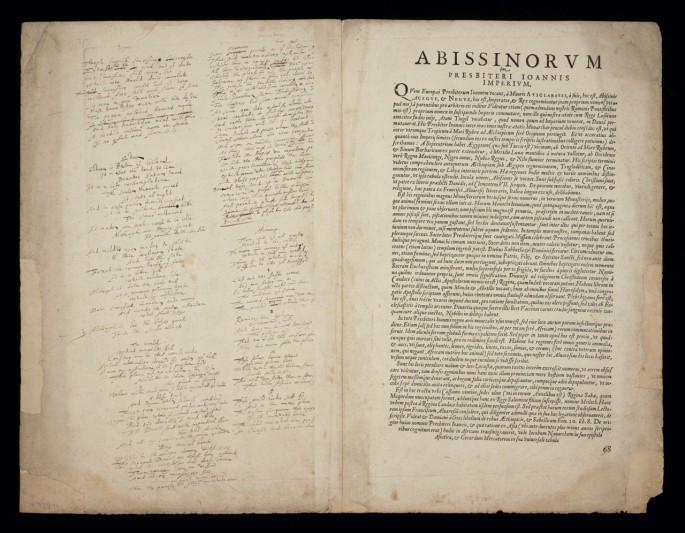Joanne Fitton, Associate Director Special Collections and Galleries, writes: The Brotherton Library holds a significant collection of 17th and 18th century manuscript verse, developed over the last 50 years or more. In the summer of 2021, Quaritch brought an autograph manuscript of Ralph Knevet’s poems to the attention of the Brotherton Library. The manuscript was due to be sold at Christie’s. With the generous support of FNL the Brotherton was able to prepare for the auction and make a successful bid.
The poet, Ralph Knevet (1600-1671), was tutor and chaplain to the family of Sir William Paston of Oxnead Hall, near Norwich. As noted in the Christie’s catalogue, Knevet’s poetical works are ‘part of the great tradition of Herbert, Vaughan, and Crashaw in 17th-century devotional poetry.’ He is best known for his series of 82 devotional lyrics A Gallery to the Temple, which remained unpublished until the 20th century. The five poems, written on the verso of the Ortelius map are the earliest extant versions of numbers 71-75 in the series. The poems show multiple corrections and false-starts. It includes an entire stanza of the poem ‘Memory,’ that does not appear in the fair copy held at the British Library. The Ortelius map, first printed in the Additamentum of 1573, depicts the mythical kingdom of Prester John as situated in north-eastern Africa.
It is not clear why Knevet was writing on the verso of a map. Some of the text is incomplete along the edge, suggesting it has been lost on the stub of a binding. When he was writing on the map, it was bound in a book. At some point the atlas was broken to sell the maps separately. Indeed, the Brotherton collection of manuscript verse holds another example of Knevet’s poetic output, using a map for his jottings. The sale of this autograph manuscript was an opportunity for the Brotherton to reunite a small part of his work. It forms a wonderful example of 17th century poetry in draft, in a unique setting (using a map in this way) and gives fascinating insight into the trade and changing preoccupations running through the sales room.
The item has been digitised and is accessible via the Special Collections website.
Researchers in several Schools at the University have been delighted to gain access digitally when in-person visits to reading rooms were challenging. The overlap between literary composition and geographical print makes the item attractive to multiple studies and it is being consulted as part of Renaissance literature taught modules in the School of English.

![The Ortelius map of the Kingdom of Prester John, n.d. [1640s] . Courtesy of University of Leeds, Brotherton Library. The Ortelius map of the Kingdom of Prester John, n.d. [1640s] . Courtesy of University of Leeds, Brotherton Library.](/sites/default/files/styles/large/public/722655_001%20Large.jpeg?itok=avY8wRyJ)